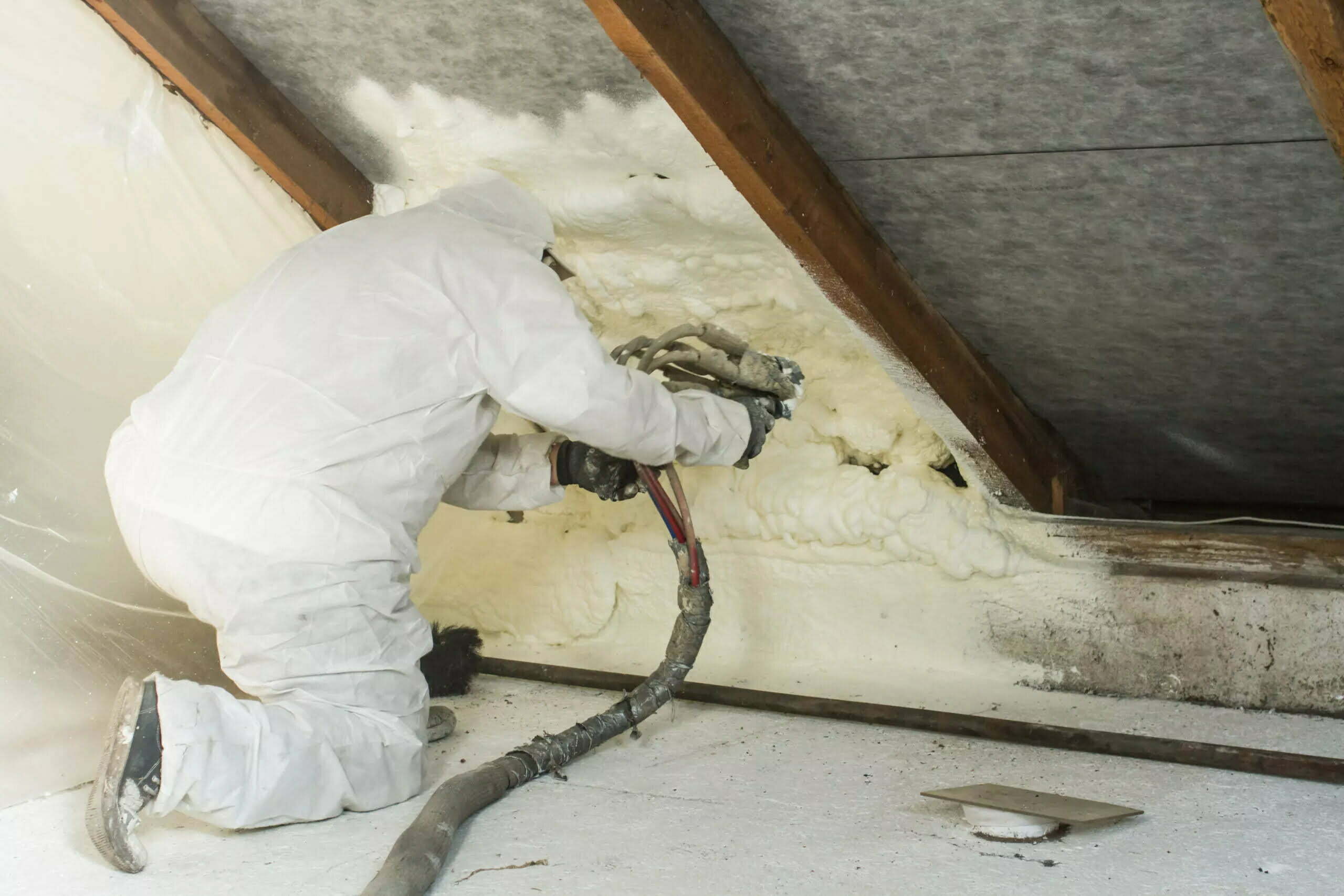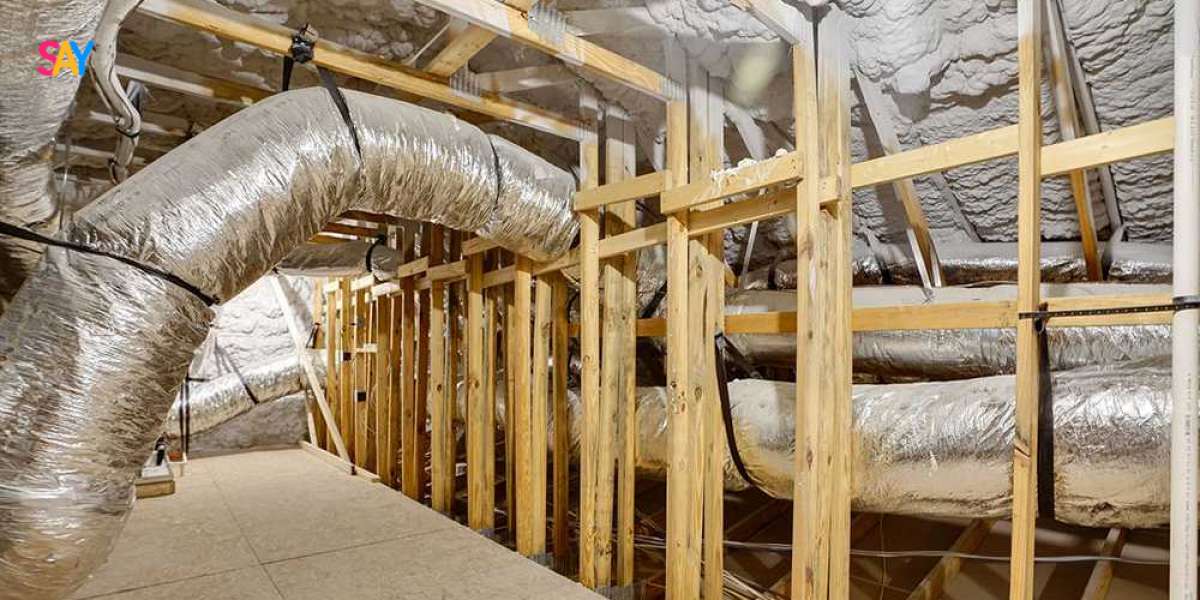Spray foam insulation significantly reduces energy bills by sealing air leaks and improving thermal performance in homes. Unlike traditional insulation materials that simply slow heat transfer, spray foam actively creates an airtight envelope, minimizing both heat loss in winter and heat gain in summer. This enhanced building envelope means HVAC systems operate more efficiently, resulting in measurable cost savings on heating and cooling.
Homeowners who install spray foam insulation can expect to see energy savings of up to 30–50% depending on the size, age, and condition of their home. This article breaks down exactly how spray foam works to reduce utility costs, compares its efficiency to other insulation types, and outlines key decision-making factors to help you determine if it's the right solution for your home.
How Spray Foam Minimizes Energy Loss
Spray foam insulation’s main energy-saving mechanism is its ability to block air leakage, which is one of the biggest contributors to high energy bills in residential buildings. Air leaks in walls, attics, and basements force HVAC systems to work harder, consuming more energy.
Key Performance Characteristics
Feature | Closed-Cell Spray Foam | Open-Cell Spray Foam |
|---|---|---|
R-Value per inch (thermal resistance) | R-6.0 to R-7.5 | R-3.5 to R-4.0 |
Air sealing capability | High | Moderate |
Moisture resistance | Excellent | Limited |
Structural support | Yes | No |
Best use case | Exterior walls, roofs, foundations | Interior walls, sound control |

Bonus Tip: Prioritize sealing the attic and crawl space—these are the biggest energy loss zones in most homes.
How It Compares to Traditional Insulation Options
While fiberglass and cellulose insulation can offer decent thermal resistance, they do not provide the same level of air sealing, which is critical to lowering energy usage.
Insulation Type Comparison
Insulation Type | Air Sealing | R-Value (per inch) | Settling Risk | Mold Resistance | Energy Efficiency Impact |
|---|---|---|---|---|---|
Spray Foam | Excellent | 3.5–7.5 | None | High | High |
Fiberglass | Poor | 2.2–2.7 | Moderate | Moderate | Moderate |
Cellulose | Poor | 3.2–3.8 | High | Low | Low to Moderate |
Mineral Wool | Poor | 3.0–3.3 | Low | High | Moderate |
Bonus Tip: Energy savings aren't just about high R-values—air sealing is equally critical for overall efficiency.
Technical Performance Data
The performance of spray foam is quantifiable in terms of both thermal and air sealing metrics. Below are key specifications.
Spray Foam Technical Specifications
Property | Closed-Cell Foam | Open-Cell Foam |
|---|---|---|
R-Value (per inch) | 6.0–7.5 | 3.5–4.0 |
Air Permeability | 0.02 L/s·m² @ 75 Pa | ~0.08 L/s·m² @ 75 Pa |
Water Vapor Permeability | 1.0 perm @ 1” thickness | 10 perm @ 3.5” thickness |
Compressive Strength | ≥ 25 psi | 5 psi |
Lifespan | 30+ years | 20–30 years |

Market Data and Impact
According to the U.S. Department of Energy, air leakage accounts for 25%–40% of the energy used for heating and cooling in a typical home. In climate zones with extreme temperatures, this number can be even higher. Spray foam helps reduce this loss, contributing to major reductions in annual energy costs.
Real-World Stat: Homeowners in colder U.S. regions who retrofit with spray foam often report heating cost reductions of 35% or more in the first year.
Things to Consider Before Making a Decision
Before committing to spray foam insulation, it's important to consider multiple factors that can impact its performance and cost-effectiveness.
Key Decision Points
- Home Age and Structure: Older homes may require prep work before spray foam can be installed effectively.
- Budget vs. Long-Term ROI: While the upfront cost is higher, long-term savings often justify the expense.
- Climate Zone: The severity of weather in your area influences how much energy spray foam can save.
- Ventilation Requirements: Airtight homes may require mechanical ventilation systems to maintain indoor air quality.
- Installation Access: Difficult-to-reach areas can increase labor and material costs.
Bonus Tip: Schedule a professional energy audit before making insulation decisions—it helps pinpoint the most cost-effective application areas.
Common Questions
What’s the difference between open-cell and closed-cell spray foam?
Closed-cell foam is denser, more moisture-resistant, and provides a higher R-value per inch. Open-cell foam is lighter and better for soundproofing but less effective for energy savings in exterior applications.
Can spray foam be added to existing walls?
Yes, but it often requires drywall removal or injection methods that can increase project complexity and cost.
Is it safe for indoor air quality?
When installed properly and allowed to cure, spray foam is considered safe and inert. Always use trained professionals to avoid off-gassing or improper application.
Spray Foam Energy Savings FAQ
How much can I save on energy bills with spray foam?
Most homeowners report savings of 30–50% on heating and cooling bills, depending on climate, home size, and existing insulation.
Is spray foam better than fiberglass for reducing energy use?
Yes. Spray foam both insulates and seals air leaks, while fiberglass primarily slows thermal transfer without sealing gaps.
Will it work in humid or cold climates?
Absolutely. Closed-cell spray foam performs well in both humid and cold climates due to its low permeability and high R-value.
Can spray foam help my HVAC system run more efficiently?
Yes. A well-insulated, sealed home reduces HVAC runtime and strain, extending system life and reducing energy use.
Do I need to insulate the whole house?
Not necessarily. Targeting high-loss areas like attics, crawlspaces, and rim joists can provide significant savings without insulating every wall.
Make the Right Decision
Spray foam insulation offers a long-term solution for reducing residential energy bills through superior air sealing and thermal performance. Whether you’re building new or upgrading an older property, focusing on proper application areas can result in meaningful efficiency gains. Evaluate your home’s energy profile, budget, and climate to determine if spray foam aligns with your long-term efficiency goals.
Author and Reviewer:
Author: Bob Gasca attended his first spray foam training in 2007 and has continued to pursue yearly training to stay current with the latest technology and practices. He is a certified Spray Foam Master Installer through the SPFA and a member of the SPFA. Additionally, Bob serves as a Spray Foam Worldwide Ambassador, sharing information with spray foam professionals globally. Recently, he returned from a building science training, where he expanded his knowledge on how weather conditions affect home performance, helping him better diagnose and improve home health for families. Bob specializes in finding solutions to complex moisture and air infiltration issues.
Reviewer: Noah Gonzalez reviewed this article and drew on 9 years of experience to offer suggestions that make the guidance more directly useful for insulation contractors.




